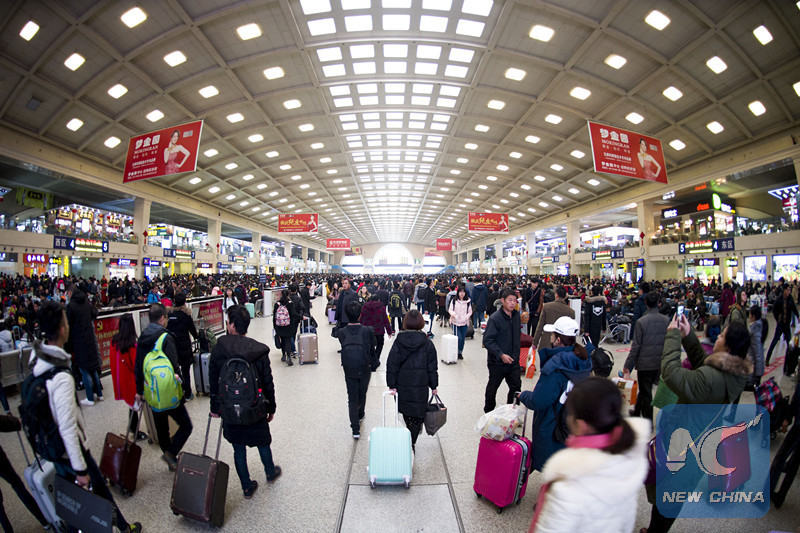
The first day of China's 2017 "Chunyun" in Hankou Railway Station, Hubei Province. (Xinhua/Xiao Yijiu)
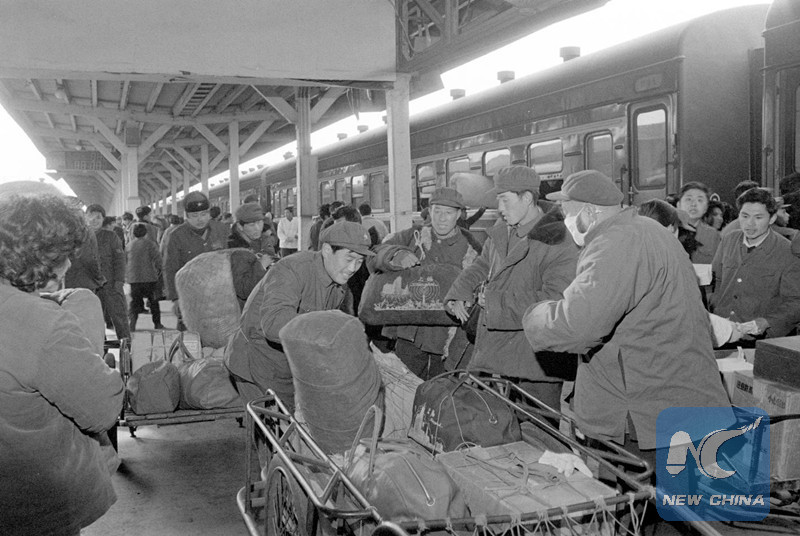
Staff of Shanghai Railway Station helps passengers carry luggage with carts in 1983. (Xinhua/Zhang Liuren)
This year's "Chunyun," or Spring Festival travel rush, began on Friday. It is considered the world's biggest human migration.
The term "Chunyun" was first used in the 1980s. Since the reform and opening up in 1978, more and more Chinese leave hometown to work and study in other cities, and thus an annual travel peak occurs before and after the Spring Festival, or Chinese Lunar New Year, which is the most important occasion for family reunions.
Throughout the three decades, the 40-day Chunyun has seen a lot of changes in many aspects, becoming an epitome of the country's enormous changes.
About 100 million trips were made during the Chunyun period in the 1980s. The figure has surged to about 2.98 billion trips today.
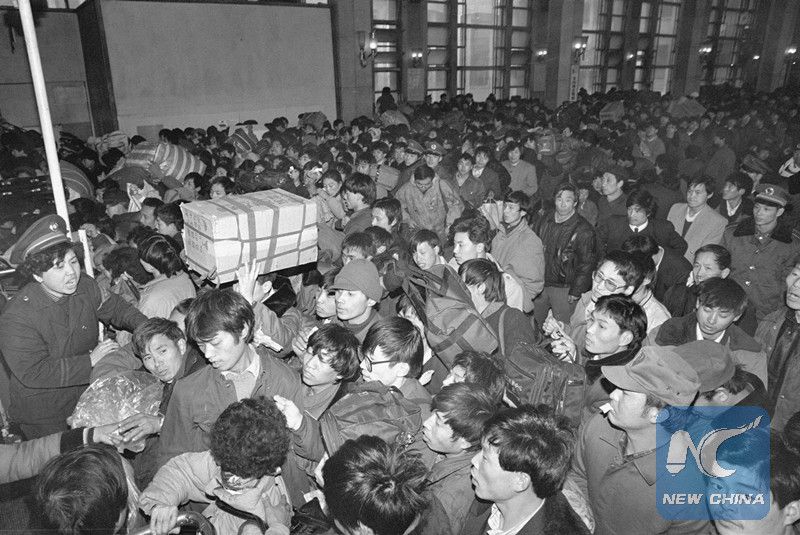
Passengers in Beijing Railway Station in 1993. (Xinhua/Tang Zhaoming)
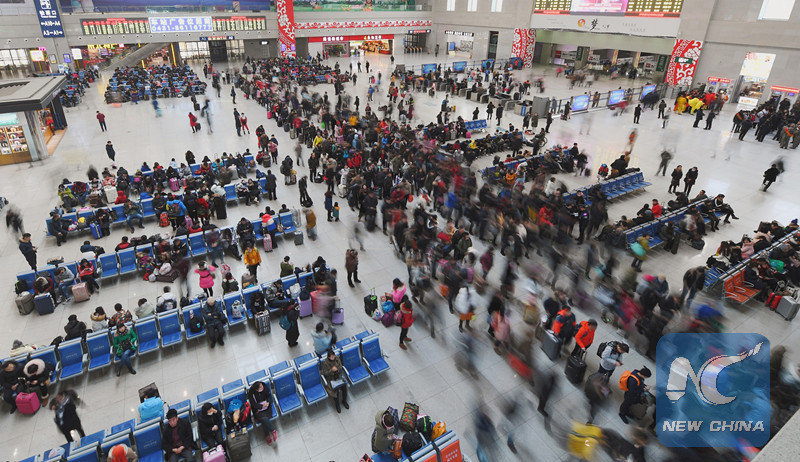
Passengers in Changchun Railway Station on the first day of "Chunyun" in 2017. (Xinhua/Zhang Nan)
People's way of traveling has changed. Railway has been the most popular way to travel. In recent years, China's rapidly-developing high-speed railways have helped ease the holiday strain for travelers. The country boasts a high-speed rail network of more than 20,000 km, the world's largest.
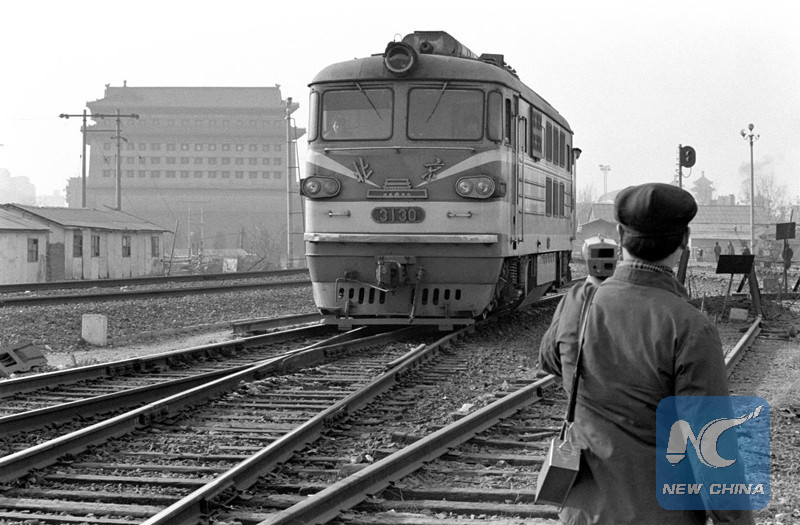
A locomotive train enters Beijing Railway Station in 1989. (Xinhua/Song Lianfeng)
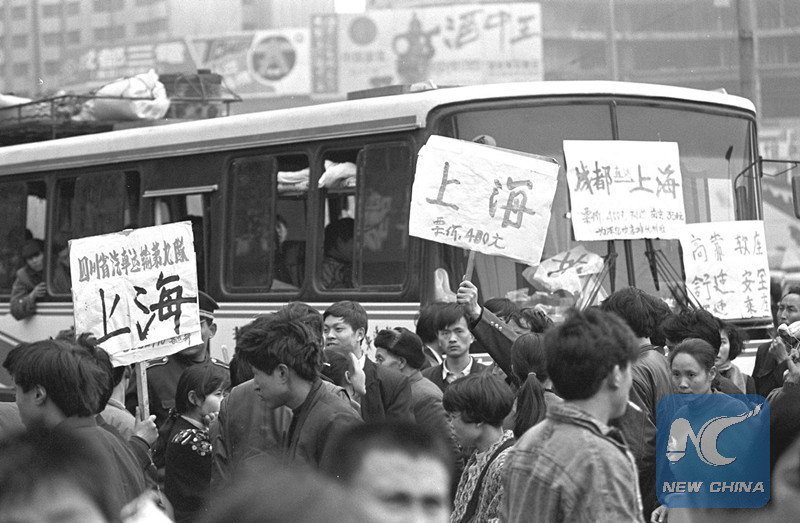
Passengers take inter-city shuttle buses to return home in 1994 in Chengdu City, Sichuan Province. (Xinhua/Chen Kui)
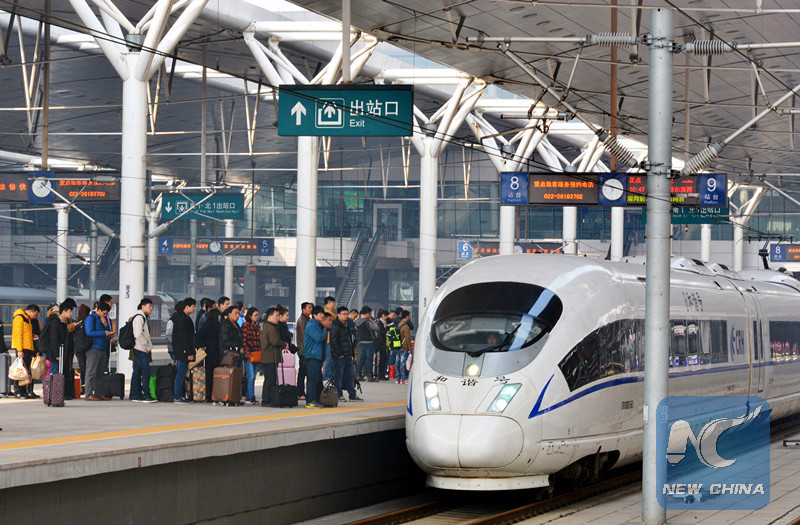
Passengers take a high-speed train in Tianjin Railway Station in 2016. (Xinhua/Yang Baosen)
This year, air travel will see the fastest growth among all transportation modes, likely to top 58.3 million trips with a surge of 10 percent from last year, according to the National Development and Reform Commission.
But in some places in southern China where highway is more developed than railway, many migrant workers prefer to go home on motorcycles. It is more economical and convenient. At least 500,000 migrant workers in Guangdong Province made such a bittersweet trip in 2016.
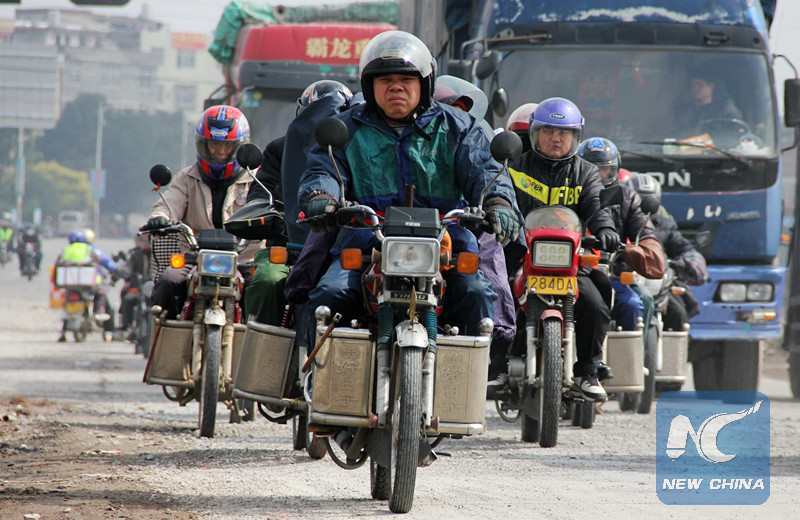
Migrant workers on their way home on motorcycles in 2016. (Xinhua/Gan Hanshen)
The way of buying tickets manifests China's fast-track development of Internet and digital commerce. No longer standing in line in front of the ticket booths for a whole night, people today can book tickets online.

People wait outside Changsha Railway Station to get tickets in 1994. (Xinhua/Long Qiyun)
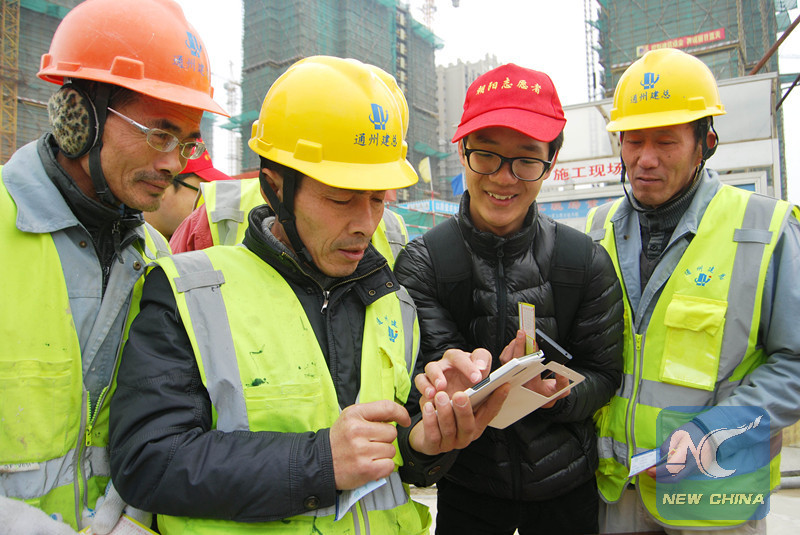
Migrant workers buy train tickets online with a smart phone in 2014. (Xinhua/Shi Yucheng)
No matter how "Chunyun" has changed, what remains unchanged is Chinese people's love of their families and good wishes of a happy life.
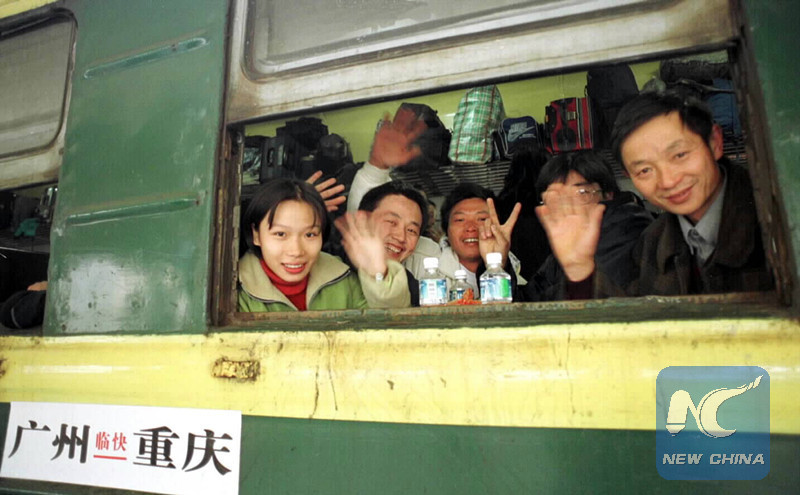
Passengers leave Guangzhou City to their hometown Chongqing City in 2000. (Xinhua/Zhuang Jin)
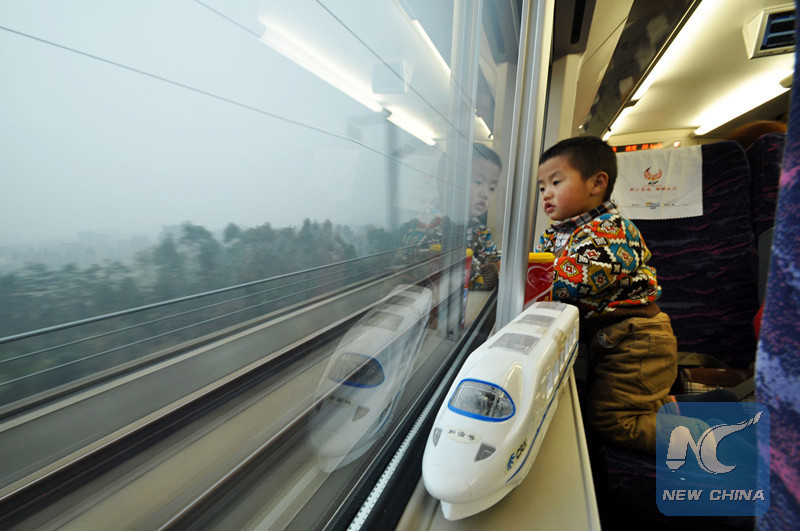
A child from rural area takes a high-speed train to reunite with his parents who work in Shenzhen City in 2015. (Xinhua/Yang Wenbin)

